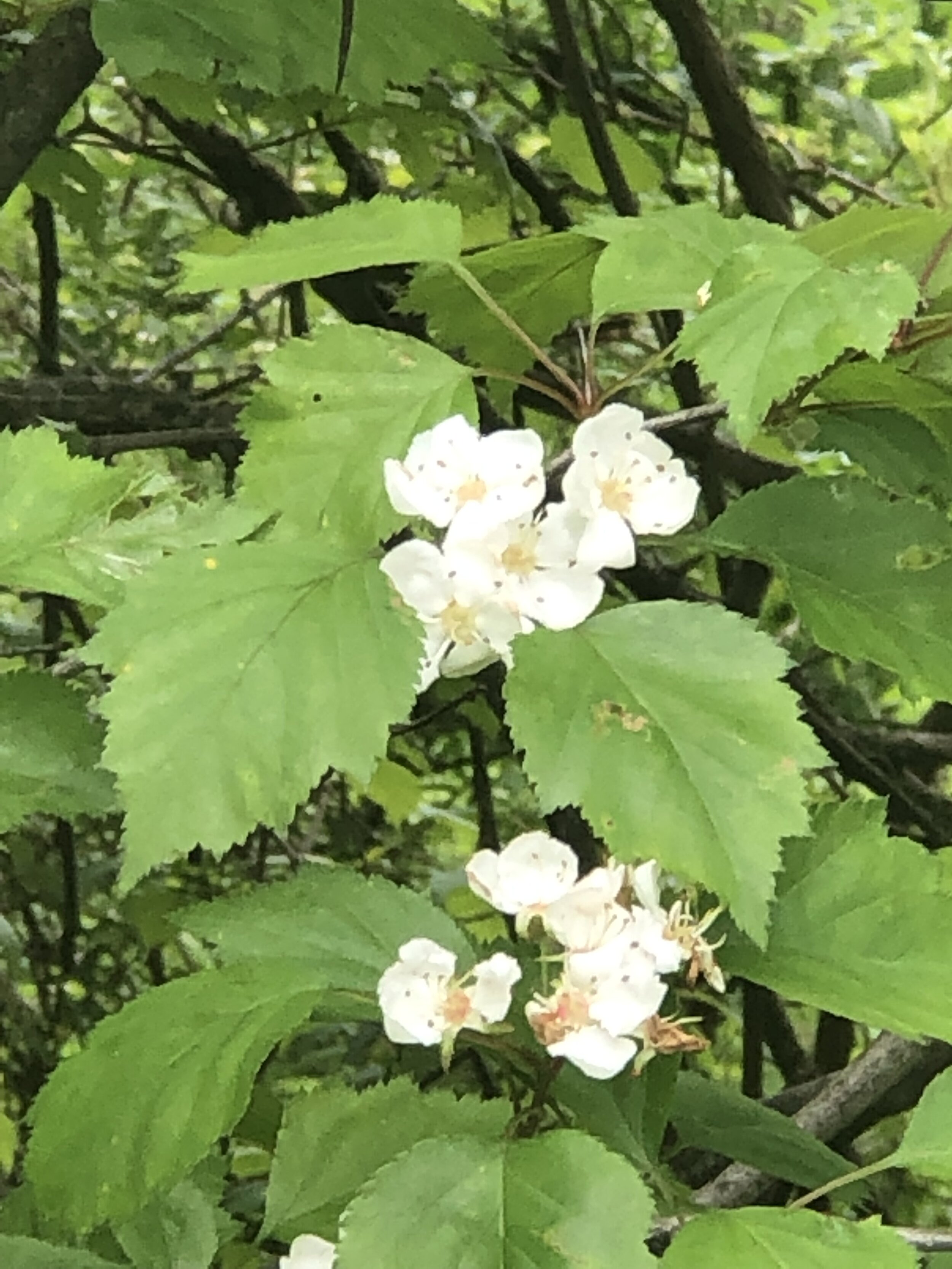There are more than sixty different species of Hawthorn trees and shrubs spread throughout Ohio. According to the ODNR, it accounts for the single largest group of trees and large shrubs that inhabit the woods and fields of my state alone! That’s incredible, but creates a large undertaking to figure out which ones I have on the land that I live on. Most people have heard of the thorny tree or shrub, and may want to take it down because they perceive it as dangerous to themselves; however, that couldn’t be farther than the truth. All parts of the tree or shrub is considered an all-around heart tonic! How many people do you know personally that could use the benefits of that?
Identifying a hawthorn is simple, it is defining the exact species that can be difficult. There is one obvious identifier and that is the long thorns along the branches/trunk. These thorns can be different shaped whether curved or straight. Whenever I see thorns on a plant, I immediately think “protective”. The thorns are protecting the plant from predators. This application is usually seen in the medicinal and spiritual uses of the plant. The bark on the mature tree/shrub is usually scaly and in different shades of gray or brown. The cluster of flowers are white with many stamens protruding from each flower (considered an identifier of the Rose family). There is usually a floral scent emanating from them. Come fall time, the flowers produce a beautiful berry similar, but larger than, the rose hip.
There are many similarities shared by roses and hawthorns both medicinally and spiritually. Both are high in Vitamin C and other antioxidants. They are both cooling astringents, and are great for cooling heat and inflammation in the body. Both are considered as “heart medicine” spiritually/emotionally. Both can utilize the fruit, flowers, and leaves for medicine. However, each one is a specific medicine for different areas of the body. Where rose is indicated more for respiratory inflammation, digestion, and colon; hawthorns are indicated for the heart/circulatory system, digestion, and the kidneys.
Hawthorn is first and foremost, medicine for all aspects of the heart! It is indicated for heart palpitations, congestive heart failure, arrhythmia, myocardial weakness, high/low blood pressure, Hawthorn is also a normalizer of cholesterol levels. Traditionally, the hawthorn berries were also used
for kidney issues. More specifically, Culpepper states that, “The berries, or the seed in the berries, beaten to powder and drunk in wine, are a singular remedy for the stone, and no less effectual for the dropsy.” Dropsy is an older term for edema or swelling due to excess water accumulation. Other traditional uses of hawthorn include digestive issues especially if there is inflammation and heat.
SPIRITUAL USES:
To help the individual open their heart to love again while releasing feelings of guilt, remorse, hurt, and grief. It brings forth a passion for living, a passion for loving, and a passion to embrace their own past and move forward. Hawthorn helps the individual to feel joy again while opening their heart to other possibilities in life they could enjoy in order to feel alive again.
APPLICATIONS:
There are many different ways to make hawthorn medicine. A flower essence can be used for the emotion/spiritual aspects of healing. You can also make infusions,decoctions, infused honey, syrup, glycerite, tincture, or oxymel for heart, kidney, or digestive issues. Try different parts of the plant in different preparations to find your favorite. I like tinctures and glycerites for shelf life and convenience, but I also enjoy an infusion.
DOSAGES:
Standard doses of hawthorn tincture are 1-3ml up to three times daily. You can drink 1-3 cups of the infusion/decoction up to three times daily as well. The syrup is usually taken in one teaspoon three times a day. There is no long-term warning when taking hawthorn due to the trophorestorative effects (tonic). It may reduce toxicity of cardiac glycoside and hypertensive medications; as well as, CNS depressants. It may inhibit effects of vasoconstrictor medications.


